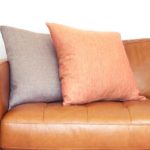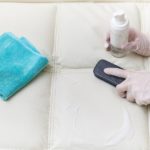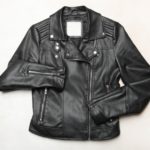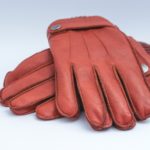Faux leather can be a difficult product to care for. We can’t use products designed for real leather, but we also can’t treat it like fabric. So, how do we clean faux leather?
In this article, you’ll learn how to clean faux leather. Before we begin, let’s cover what it’s made from to understand the best options for cleaning it.
What Is Faux Leather?
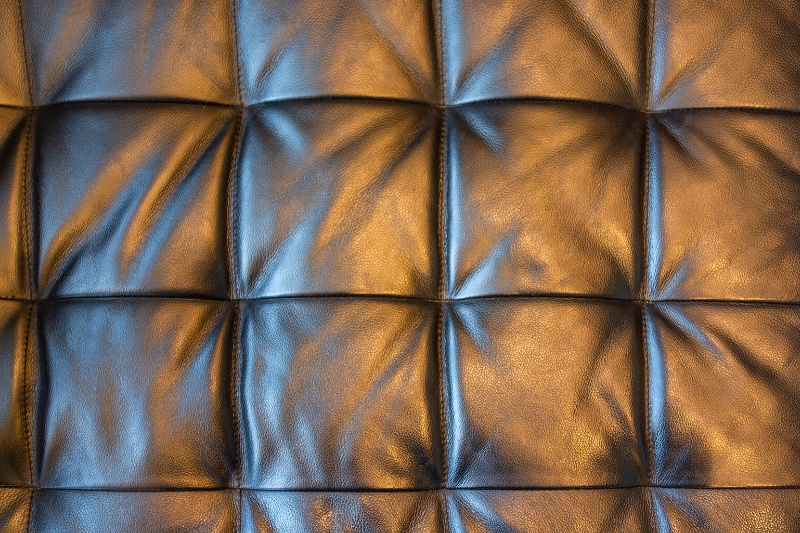
Faux leather, also called artificial leather or pleather, is made from PVC or polyurethane.
The plastic is built up in several layers over a cloth backing until it mimics the texture and feel of real leather.
While quality can vary wildly, upholstery will usually use thicker faux leather than clothing.
So, the short answer is that faux leather is plastic. This is why we can’t use the same cleaning products as we do for real leather.
Unlike the real product, faux leather doesn’t need moisture put back in with special creams. But, because it’s plastic, we generally can’t wash it in the same way as fabric.
How to Clean Faux Leather
A big advantage of faux leather over the real stuff is that it needs far less maintenance. That said, you’ll still need to clean it, especially if it gets stained or marked.
The steps below are written for upholstery (e.g., sofas, car seats, etc.) but they can easily be adjusted for faux leather clothing.
To clean faux leather, you’ll need:
- A vacuum cleaner
- Microfibre cloths
- Mild washing up liquid
- Gentle stain remover, such as Autoglym Leather Cleaner
Step 1: Removing loose debris
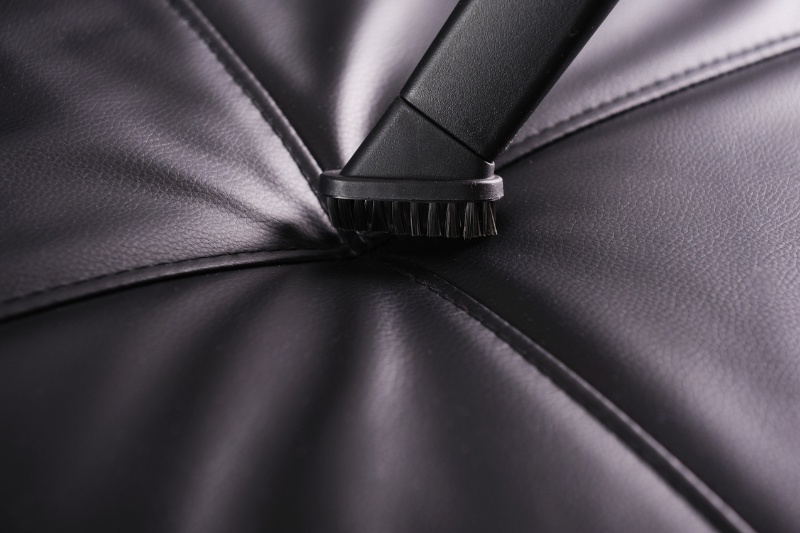
The first step, as with any cleaning job, is to remove loose debris from the faux leather.
Use the brush attachment for your vacuum cleaner, as this’ll minimise the risk of marking it. Make sure you hoover all the areas you plan to clean.
Step 2: Wipe down the area
Next, wet a microfibre cloth with warm water and wipe down the area. Don’t focus too hard on removing dirt at this stage.
Also, ensure the water isn’t too hot, because hot water can damage the finish. It should be just a bit warmer than body temperature (40 degrees Celsius or so).
Step 3: Wash the area
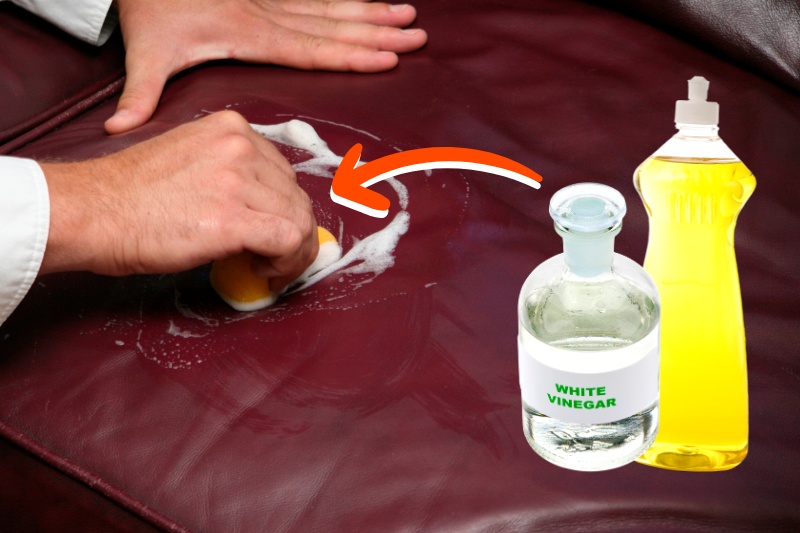
Mix a squirt of washing up liquid with some clean warm water. You could also add one part of white vinegar to help remove grease.
Dip your cloth in, wring it out, and begin cleaning the faux leather. Work in small circular motions, regularly rinsing your cloth.
Avoid scrubbing brushes or washing up sponges, as these could strip the finish off your faux leather. While a soft cloth will take a bit of extra work, it’s the best way to prevent damage.
If you have any major stains, use an enzyme-based stain remover. There aren’t many on the market designed for faux leather, but anything suitable for upholstery or leather will be fine.
Do a patch test to make sure, and don’t use any that come with an applicator brush.
Step 4: Dry the faux leather

Finally, dry the area using a clean microfibre cloth. Again, work in circular motions to remove as much excess water as possible.
Unlike real leather, it’s not the end of the world if the faux leather air dries – it’s not going to crack as a result.
How to Clean Faux Leather Clothes
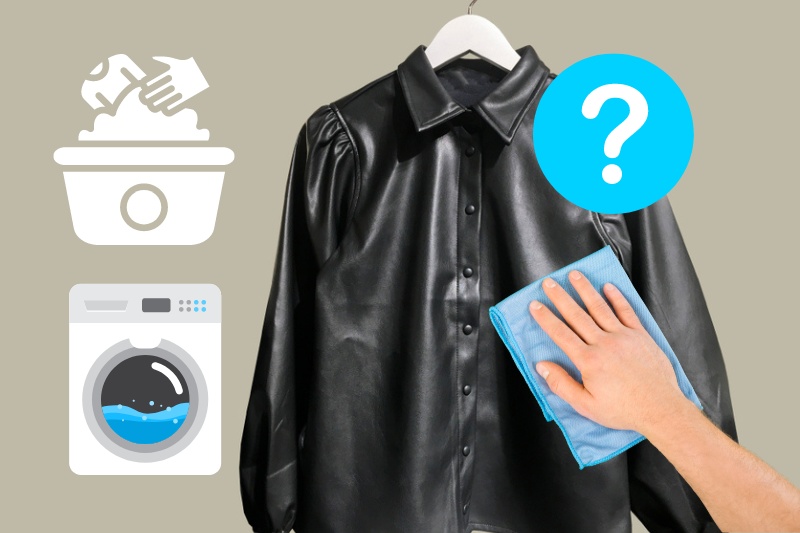
Cleaning faux leather clothes is really easy. You could follow the method above for larger items or for spot cleaning.
Alternatively, you could wash the item by hand in cool water. Make sure you use a mild laundry detergent and wash the garment inside out.
You might be able to put your faux leather clothing in the washing machine, but only do so if the instructions say you can.
The agitating action of the washing machine may be too abrasive, as it can strip the upper layers off.
Finally, faux leather shoes can be cleaned the same as any other shoe. Mix a small amount of washing up liquid with some warm water and work over the shoe with a cloth.
There’s no need to use any kind of conditioner or oil on faux leather shoes.
Final Thoughts
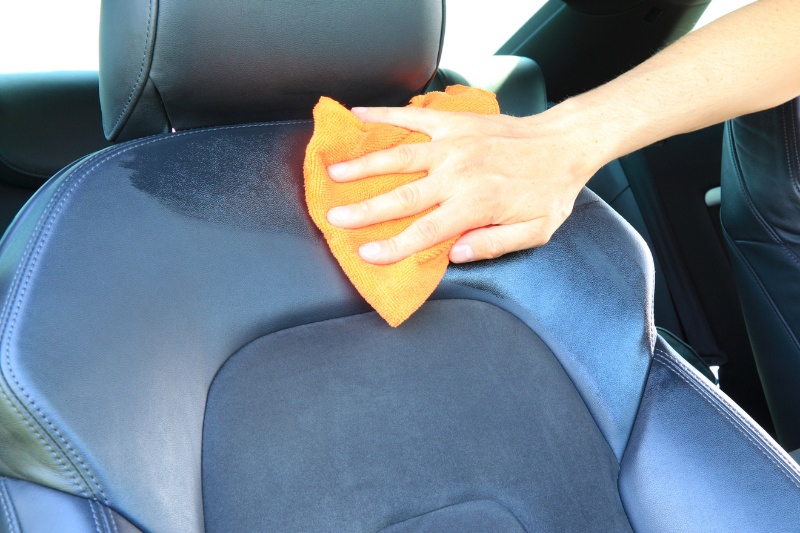
Hopefully, you should now know how to clean faux leather. As you can see, it’s pretty easy, and the steps are basically the same regardless of whether it’s upholstery or clothing.
The most important thing is to make sure you don’t scrub the faux leather. It can be quite delicate compared to real leather, and there’s not much you can do once the plastic layers start wearing away.

Jacob is a writer based in Wales, where he lives with his partner and two dogs. All his work is fuelled by extensive research and buckets of coffee.

